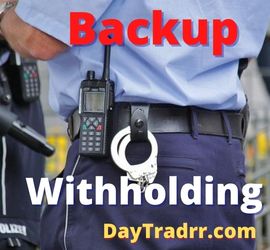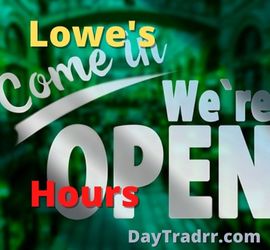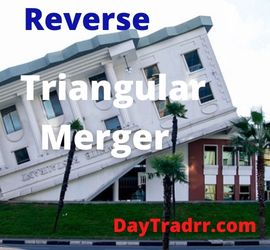What Is a Dealer Market?
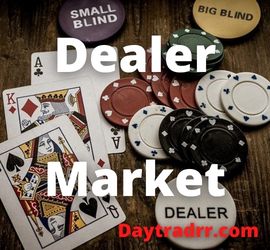 A dealer market is a financial market where dealers list prices they are willing to purchase and sell specific assets for their own account. Dealers add liquidity and act as market makers. The dealer market is sometimes known as an OTC market (over-the-counter). This means that financial products, such as securities, are traded directly between individuals. Trading does not require the services of a private security dealer.
A dealer market is a financial market where dealers list prices they are willing to purchase and sell specific assets for their own account. Dealers add liquidity and act as market makers. The dealer market is sometimes known as an OTC market (over-the-counter). This means that financial products, such as securities, are traded directly between individuals. Trading does not require the services of a private security dealer.
A dealer market is a financial exchange process in which numerous dealers list prices at which they intend to buy or sell specific securities. Each dealer is known as a market maker. They provide liquidity and transparency by electronically displaying the prices they are willing to accept in exchange for a particular security. On display is the price they will buy the security, known as the bid price. Also on display is the price at which they will sell the security, known as the offer price.
Bonds and foreign exchanges are primarily traded in dealer markets. Stocks trading on the Nasdaq are an example of an equity dealer market. The NASDAQ system was founded in 1971 as a part of the Over-the-Counter (OTC) market. However, it is now considered a separate entity. In this market, a buyer and seller are never put together. Instead, their orders are (buy/sell) executed through marker makers that are the dealers.
How a Dealer Market Works
In a dealer market, a market maker provides his or her own capital to create liquidity for investors. The utilization of the bid-ask spread reflects a concrete buy and sell price to investors. It is thus the principal mechanism of risk control for the market maker.
The dealer establishes a bid price and an ask price for the underlying security and will trade with any investor willing to accept those prices. Securities sold by dealers are sometimes referred to as traded over-the-counter securities (OTC). By doing this, the dealer provides liquidity in the market for a nominal fee. In other words, dealers frequently set bid prices that are lower than the market and ask prices that are higher. The difference between these prices is the dealer’s profit. In exchange, the dealer takes on counterparty risk.
A dealer market can focus on any security or commodity, including equities and government bonds. To engage in this form of market, dealers must generally meet severe standards. This includes compliance with the rules and regulations that control the overall activities of the market. If a Market Maker chooses to operate outside of the rules governing trading rights, that dealer may be temporarily restricted from trading or barred from dealing entirely.
Example
For example, if Dealer A has ample inventory of WiseWidget Co. stock – which is quoted in the market by other market makers at $10 / $10.05 – and wishes to offload some of its holdings, it can post its bid-ask quote as $9.98 / $10.03. Rational investors looking to buy WiseWidget Co. would then take Dealer A’s offer price of $10.03 since it is 2 cents cheaper than the $10.05 price at which it is offered by other market makers. Conversely, investors looking to sell WiseWidget Co. stock would have little incentive to “hit the bid” of $9.98 posted by Dealer A, since it is 2 cents less than the $10 price that other dealers are willing to pay for the stock. (Source: investopedia.com)
Dealer Market vs. Auction Market
The existence of multiple market makers distinguishes a dealer market from an auction market. Whereas, an auction market utilizes a centralized specialist to facilitate trading and liquidity. This centralized specialist matches buyers and sellers for a specific security. For example, the trading floor of the New York Stock Exchange is an auction market. Conversely, over-the-counter (OTC) trading is an example of a dealer market. OTC trading does not require a securities dealer and trades are conducted directly between individuals.
Auction markets typically utilize one specialist who acts as the gatekeeper for incoming buy and sell orders. Essentially, the specialist operates from a single location and matches purchasing and selling orders as they arrive. As a result, the main responsibility is to process orders. This means that a specialist in an auction market does not conduct market research or provide sales help to investors. A specialist operating in an auction market is also restricted to using the capital assets of a single firm.
Dealer Market
This is a financial market that has multiple dealers buying and selling securities using their own accounts. Here are some characteristics of the dealer market:
- Dealers act as market makers and set bid prices/offer prices.
- Quote-driven – the dealer executes the order and produces a bid and offer price for the market participants.
- The exchange of securities is executed through the dealer.
- There is no centralized trading floor since it is all completed electronically.
- A dealer market primarily consists of foreign exchanges and bonds.
- A prime example of a dealer market is NASDAQ.
Auction Market
In contrast, the auction market is a financial market where buyers and sellers enter competitive auctions for financial instruments. Here are some characteristics of the auction market:
- Buyers and sellers enter auctions.
- Bid and offer price is set by market participants.
- The execution of a trade can only go through if the market participant’s bid and offer prices match.
- There is a singular entity in the auction market that controls trade activity by matching the market participant’s bid and offer prices to ensure that a deal is made.
- There is a centralized trading floor.
- The auction market primarily consists of stocks.
- A prime example of an auction market is the New York Stock Exchange (NYSE).
(Source: corporatefinanceinstitute.com)
Dealer Market vs. Broker Market
A brokered market works by matching buyers and sellers as counterparties. The delay in locating an appropriate counterparty can result in less liquidity than when dealers act as the counterparty. However, broker markets are utilized for a wide range of securities, particularly those with new issuance. For example, an initial public offering (IPO), is often issued through an investment bank. The investment bank brokers the issue in order to acquire subscribers. This is likewise true for new bond issuances. Also, brokered markets are suitable for specialized or customized products.
For a deal to take place in a broker market, there must be a definite buyer and seller. Whereas, in a dealer market, buyers and sellers execute buy/sell orders separately and independently through individual dealers. Other distinctions between broker and dealer marketplaces include:
- Clients – Brokers execute a trade on behalf of others, while dealers execute trades on their own behalf. Brokers buy and sell securities for their clients, but dealers buy and sell on their own accounts.
- Restrictions – Brokers don’t have the rights and freedoms to buy or sell securities, but dealers have all those rights to buy and sell.
- Commissions – Brokers get commissions for transacting business, but dealers do not get commissions since they are primary principals.
Final Words
The Dealer Market is a secondary market in which the dealer serves as the counterparty for both buyers and sellers. The dealer is the market maker who sets the bid price. Investors who are ready to accept the price can complete the transaction. As a result, it ensures market liquidity. Stocks are not typically traded in this market; instead, bonds and currencies are the most commonly traded securities. It is a quote-based market where the dealer cites two prices. The Bid Price is the price at which the dealer is willing to acquire the security. The Ask Price is the price at which the dealer is willing to sell the security. The dealer profits from the difference between the bid and ask prices. The dealers are an essential element and contribute to market liquidity and long-term growth.
Up Next: Cutting Prices vs Cutting Costs
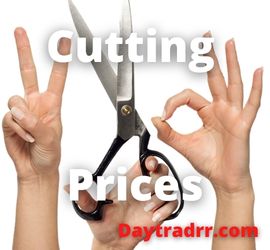 Cutting prices is the competitive strategy of reducing prices to introduce a new product, expand market share, or drive away competitors.
Cutting prices is the competitive strategy of reducing prices to introduce a new product, expand market share, or drive away competitors.
Cutting costs refers to actions taken by a firm to cut expenses and increase profitability. Cost-cutting strategies are generally undertaken when a company is in financial difficulties or during economic downturns. They can also be implemented if a company’s management anticipates future profitability concerns. Ultimately, cost-cutting might become part of the corporate strategy.
Many manufacturers and retailers launch price-cutting programs. However, the majority fail to create a significant improvement in their competitive position. Instead, price wars are waged that harm profitability. It’s one of the most perplexing paradoxes in business. Cutting prices without a battle plan and strategy in place is usually unproductive. Yet, the most aggressive and fastest-growing competitors frequently have the lowest pricing. Many successful mature companies see their market share eroded by upstart firms offering unbeatable prices. Still, their own efforts to decrease prices deliver hardly detectable volume and market share improvements.

